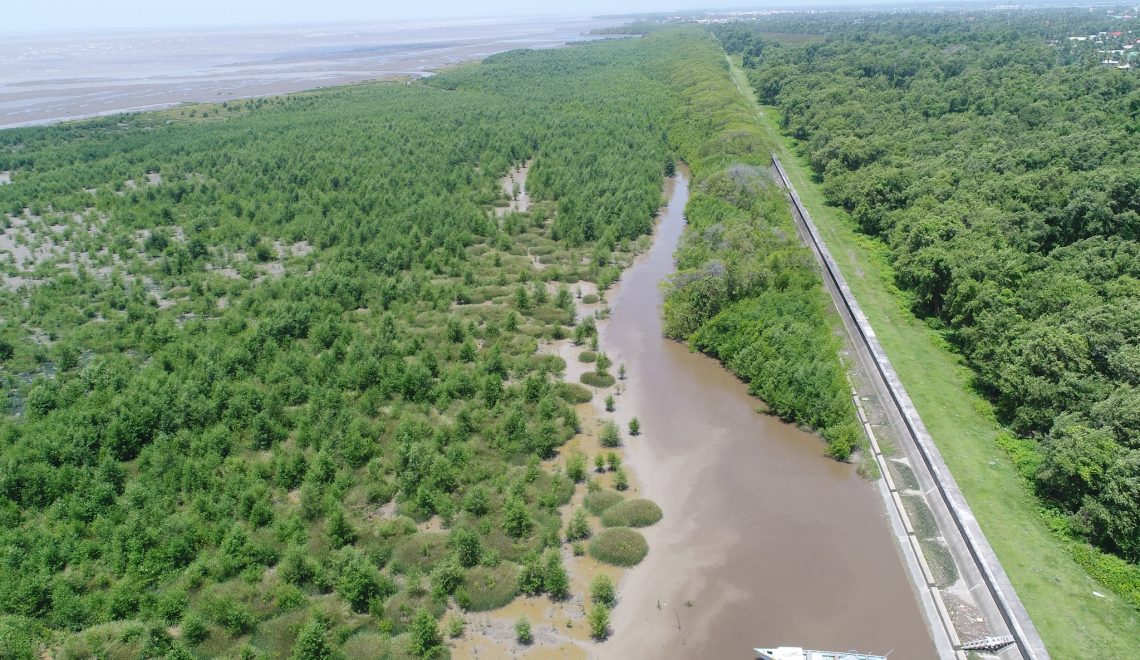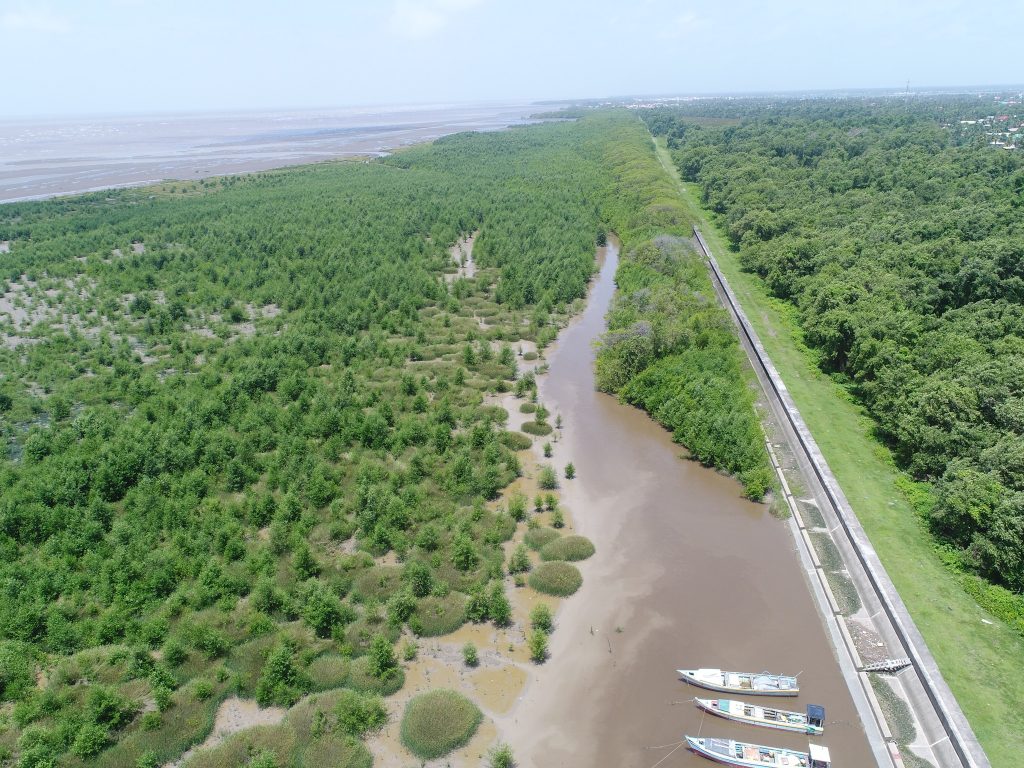Guyana’s Mangrove Revival 2025: Where Coastal Conservation Meets Eco-Tourism


In 2025, Guyana is quietly leading one of the Caribbean and South America’s most inspiring environmental success stories — the national revival of its mangrove forests. Once under threat from coastal erosion and climate change, these natural sea barriers are now becoming a new frontier for eco-tourism, community conservation, and climate resilience.
For travelers seeking meaningful nature experiences, Guyana’s mangrove corridors offer something rare: untouched beauty, thriving biodiversity, and the chance to witness conservation in action.
Why Mangroves Matter So Much to Guyana
Mangroves are more than trees growing in seawater. For Guyana, they are a natural defense system, stretching along the Atlantic coastline and protecting low-lying coastal communities from storm surges and erosion.
Their importance extends beyond protection:
-
They act as carbon sinks, storing vast amounts of greenhouse gases
-
They serve as nurseries for marine life
-
They protect fisher livelihoods
-
They stabilize sediment and improve water quality
In a country where most of the population lives below sea level, mangroves are nothing short of a national shield.
The Mangrove Revival Movement in 2025
In recent years, government agencies, environmental NGOs, and coastal villages have expanded replanting efforts across Region 2, Region 4, and Region 6. In 2025, these programs have reached a new level of scale and impact.
Local youth groups now lead shoreline planting projects, while researchers monitor biodiversity recovery and coastal stability. Entire stretches of previously eroded shoreline are once again thriving with dense green mangrove belts.
This revival is directly strengthening Guyana’s eco-tourism sector, already highlighted in experiences such as eco-friendly travel initiatives across the country:
👉 https://www.travelguyana.co/2024/12/17/eco-friendly-travel-experiences-community-based-tourism-and-conservation-efforts-in-guyana/
Mangrove Eco-Tours: Guyana’s Newest Nature Experience
In 2025, mangrove eco-tours are emerging as a powerful new attraction for visitors who want immersive, low-impact adventures. These tours offer:
-
Kayaking through tidal mangrove tunnels
-
Birdwatching for egrets, scarlet ibises, and herons
-
Crab harvesting demonstrations with local fishers
-
Sunset photography across coastal wetlands
Travelers exploring Guyana’s wild side already enjoy river safaris and rainforest expeditions:
👉 https://www.travelguyana.co/2025/11/02/wild-wonders-of-guyana-exploring-the-untamed-beauty-of-its-wildlife/
Mangrove tourism now completes the marine and coastal dimension of that journey.
Community-Led Conservation and Tourism
What makes Guyana’s mangrove revival unique is that it is community-driven. Villages along the coast are not just planting trees — they are shaping sustainable tourism around them.
Many of these same communities are already involved in village-based tourism models transforming rural travel:
👉 https://www.travelguyana.co/2025/11/26/the-rise-of-community-tourism-in-guyana-2025-how-villages-are-shaping-the-future-of-travel
By combining conservation with guided tours, handicraft markets, seafood tastings, and cultural storytelling, coastal villages are creating new income streams without harming the ecosystem.
Wildlife Returning to the Mangroves
As the mangroves have returned, so has wildlife. In 2025, observers report noticeable rebounds in:
-
Juvenile fish populations
-
Shore birds and migratory species
-
Crabs, mollusks, and mangrove snails
-
Small mammals and reptiles
For wildlife travelers, this pairs beautifully with inland rainforest experiences such as the Amazon basin of Guyana:
👉 https://www.travelguyana.co/2025/11/03/into-the-green-heart-discovering-the-amazon-of-guyana/
Together, these landscapes make Guyana one of the few destinations where travelers can explore rainforest, rivers, savannahs, and living coastlines in a single trip.
Climate Change, Sea Level Rise & Guyana’s Coastal Defense
Guyana is often cited globally as one of the most climate-vulnerable countries due to its low-lying coastal population. In 2025, mangroves have become a frontline tool in the nation’s climate adaptation strategy.
Unlike concrete sea walls, mangroves:
-
Grow stronger over time
-
Repair themselves naturally
-
Absorb wave energy
-
Support biodiversity while protecting infrastructure
This nature-based solution is now being studied by international organizations as a global model for coastal nations.
Best Time to Experience Mangrove Eco-Tours in Guyana
The ideal season for mangrove travel is during:
-
Dry season (February–April, August–September) — best for kayaking and photography
-
Late afternoon to sunset — peak bird activity and golden coastal skies
Many visitors combine mangrove tours with river excursions such as:
👉 https://www.travelguyana.co/2025/11/07/discover-serenity-the-demerara-river-sunset-tour-with-trail-masters-adventure-tours/
What This Means for Sustainable Tourism in Guyana
The mangrove revival strengthens Guyana’s international image as a green tourism destination. It supports:
-
Low-carbon travel experiences
-
Conservation-based employment
-
Education for youth in environmental science
-
Global climate leadership for small nations
It also complements national celebrations and cultural seasons already drawing visitors in 2025, such as:
👉 https://www.travelguyana.co/2025/11/25/guyanas-festival-of-lights-2025-a-new-national-tradition-bringing-communities-together/
How Travelers Can Support Mangrove Conservation
Visitors to Guyana in 2025 can directly contribute by:
-
Booking certified eco-tours
-
Participating in planting programs
-
Purchasing local coastal crafts
-
Supporting village-run guesthouses
-
Avoiding plastic waste along shorelines
This ensures tourism strengthens the ecosystem instead of exploiting it.
Final Thoughts: Guyana’s Coastline Is Coming Back to Life
Guyana’s mangrove revival is not just an environmental story — it is a tourism story, a cultural story, and a survival story. In 2025, travelers can now experience a coastline that is healing itself, guided by communities who understand that the future of tourism depends on the future of nature.
As Guyana continues to redefine eco-tourism across rainforest, rivers, savannah, and sea, the mangroves stand as one of its most powerful symbols of resilience.
